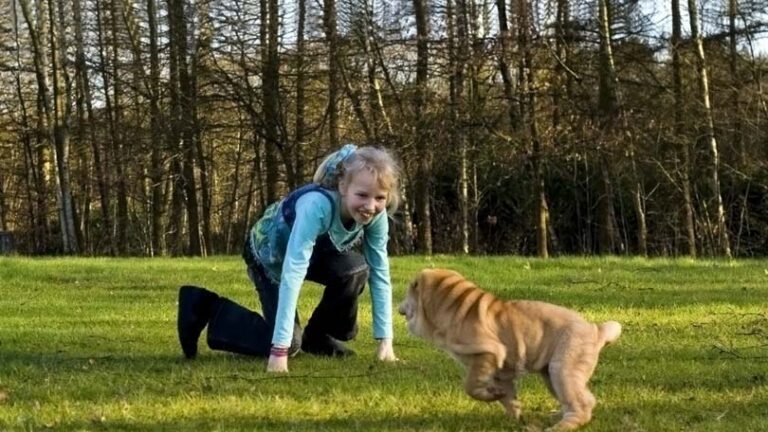Dog Training Commands
Obedience training for your dog should never be considered optional. Just as you would teach your child good manners so he or she could behave properly in society, you should also teach your dog good manners and that’s where some basic dog training commands come into the picture.
Whether you choose to attend formal obedience training classes or not, you need to plan on teaching him some basic dog training commands, including “Sit,” “Stay,” “Down,” “Leave,” and “Come.” Not only are these commands critical so your dog will be able to get along with others in public but they are also important if you choose to pursue the American Kennel Club’s Canine Good Citizen (CGC) certification.
Why Obedience is Important
Dog training commands are about more than just getting your dog to do what you want when you want it. These commands can protect your dog’s life if he gets away, can make it easier for him to be socialized with other people and animals, and can make him much easier to live with in your home. Even more importantly, this type of training helps you bond with your dog and establishes you as the leader of the pack in your household. Plus, learning obedience is good for your dog – it gives him something to do to keep his mind preoccupied and not looking for ways to get into mischief.
The Canine Good Citizen certification might also be important to you. Some apartments and insurance companies will not admit/cover dogs that are considered a risk so having this certification is one way to overcome those potential objections. You might even be eligible for a discount on your premiums thanks to the CGC. Additionally, this certification is a good starting point for further training or competing. If you want to use your dog as a therapy animal meaning he visits hospitals and nursing homes to lift the spirits of residents, you need to pass this certification first. Most people who want to pursue obedience or agility trials with their dog also go for the CGC first to ensure the dog has the basic knowledge needed to move forward.
The CGC Basics
Back in 1989, the American Kennel Club started the Canine Good Citizen program to encourage more owners to pursue proper obedience training and to establish a standard for what should be expected of a dog in society. To pass the CGC certification examination, your dog must be capable of doing ten different things.
- Must be sit to be petted
- Must accept a stranger
- Must be groomed (evaluator touches ears, feet, etc.)
- Walk on a lead
- Walk on a lead through a group of people
- Show interest in another dog but nothing else
- Show interest in distractions but nothing else
- Be calm during separation from owner
- Come on command
- Demonstrate ability to Sit, Lie Down, and Stay on command
Ensuring that your dog can meet all of these objectives requires a lot of work on obedience. Any dog can pass the CGC test if enough effort is given to the process.
Learning Dog Training Commands
The “Come” command and proper leash walking are topics that would require more room than is available to discuss here, but they are clearly important parts of passing the examination and of training your dog to be a positive example of canine behavior in your community. However, we can look at how to teach your dog some of the other necessary commands.
Before you begin teaching dog training commands, make sure you know something your dog is going to want as a reward. Most dogs respond best to food treats, usually very smelly and tasty treats. You want something that can be cut into very small pieces – otherwise, your pooch is going to get pudgy during training. If your dog isn’t big on food, try a favorite toy or even something as simple as affection. Once you find something that works keep using it consistently.
If you want to know the best order for teaching these dog training commands, you should usually start with “Sit” because it does play a part in most of the other commands. It’s also one of the easiest to teach and the confidence is likely to make the rest of the teaching easier.
Hold the reward you’ve chosen over your dog’s nose or head. Then move your hand backward. As your dog follows the reward with his nose or eyes, he will usually automatically go into a sitting position. Remember as you’re doing this action to say, “Sit.” As soon as the dog’s bottom hits the floor, give him the reward and praise him.
Obviously, he’s not going to master this trick after just doing it once or twice. You’ll probably want to spend about 30 minutes a day at least on training. Now once he will “Sit” almost every time you tell him then you can introduce additional commands.
To teach “Stay,” for example, you ask your dog to “Sit” then place your hand with the palm out in front of your dog’s face and give the command. Step back about three steps, wait a moment, then say, “Release” (or any word you choose that means roughly the same thing). Keep practicing and extending the time you ask the dog to stay. If he gets up, put him back in a sit position but do not scold him.
When you teach “Down,” you should again start your dog in a sit position. Now take the reward, hold it in front of his face then lower your hand to the ground while giving the command. Usually after a couple of tries the dog will lower himself onto the ground. At that moment, give him the reward and praise him. You should also practice the combination of “Stay” and “Down” which is usually more difficult for dogs.
Finally, the “Leave” command is important because you can use it to keep your dog from jumping on people, things, or other animals. To teach this command, ask your dog to sit and hide a treat in one of your hands. Hold your hand out to the dog with the treat revealed. When your dog tries to take it, close your hand and say “Leave.” When your dog no longer tries to take the treat, say “Take” and let him have it as a reward along with lots of praise.
By practicing these basic dog training commands consistently, you can ensure that your dog is a wonderful addition to your community.

Having discovered a fondness for insects while pursuing her degree in Biology, Randi Jones was quite bugged to know that people usually dismissed these little creatures as “creepy-crawlies”.







